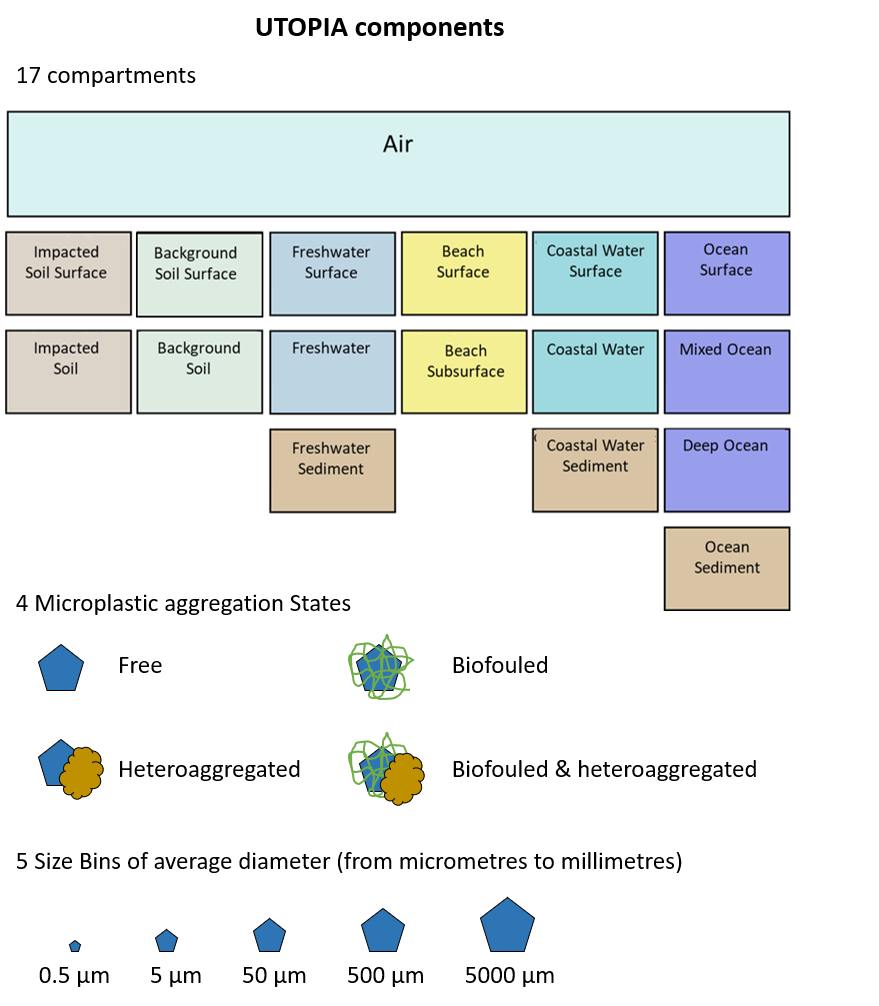ABOUT THE PROJECT
The UTOPIA web app is an interactive tool that enables users to explore the fate of microplastics across environmental compartments interactively within the UTOPIA unit world framework. The model code used in the web-app matches the UTOPIA model release: v1.0-webapp.
The User can select Microplastic properties as well and design emission scenarios via selection of the receiving compartment of emissions, selecting a flow of emissions, and the size and microplastic aggregation state for emission.
ABOUT THE MODEL
UTOPIA (the multimedia UniT world OPen-source model for mIcroplAstic) is an open-source evaluative unit world model that has been developed within the LRI ECO56 and ECO68 projects.
UTOPIA is a platform to synthesize knowledge and understanding about the fate of microplastics in the environment. The model tracks plastic pollution in 17 environmental compartments that cover the air, different types of soils, water, and sediments, in five size bins, ranging from nanometers to millimeters, and in four speciation states (free, heteroaggregated, biofouled and biofouled and heteroaggregated).
The model computes the steady-state distribution of microplastic masses and particle numbers across all compartments, size bins, and speciation states, and provides MP-relevant exposure metrics such as Overall Persistence, Overall Residence time, and Long-range transport potential metrics.
The image below shows the foundational elements of the UTOPIA model.

ABOUT THE RESEARCHERS
Prado Domercq, Post Doc
Prado Domercq is a postdoctoral researcher at Stockholm University. She is an environmental chemist and modeler specializing in pollutants of emerging concern, particularly nano- and microplastics. She develops open-source models and tools to improve understanding of their environmental fate and exposure and to support evidence‑based decision making.
Stockholm University profile | Google Scholar

Matthew MacLeod, Professor
Matthew MacLeod is a professor at Stockholm University. He is an environmental chemist and modeler who studies factors controlling human and environmental exposure to pollutants. He combines conceptual and mathematical modeling with laboratory and field studies to quantify exposure, identify process drivers, and develop practical tools and guidance for managing pollutants with high exposure potential.
Stockholm University profile | Google Scholar

DEVELOPMENT
This web app was developed in collaboration with the team at InfraVis, who played a key role in designing and building the application. Their technical expertise and commitment to environmental research were essential in bringing this global microplastics modeling tool to life.
FUNDING & RESEARCH INFRASTRUCTURE
Two InfraVIs collaboration projects made this work possible: Interactive visualization of scenarios of exposure to microplastics in a unit world model & Improving UTOPIA web-app: a user interface to understand microplastics' fate in the environment.